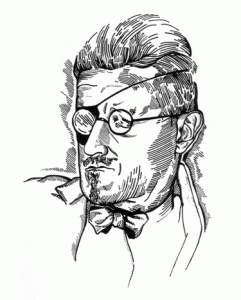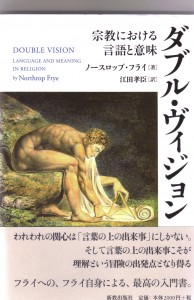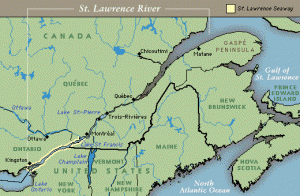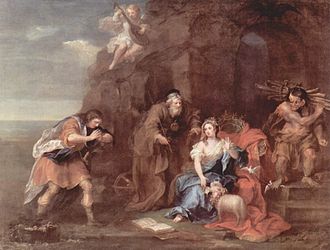
[William Hogarth, The Tempest, ca. 1735.]
The following paper was delivered at “Educating the Imagination: A Conference in Honour of Northrop Frye on the Centenary of His Birth,” October 4th – 6th 2012, Victoria University in the University of Toronto.
NORTHROP FRYE AND COLIN STILL[i]
Robert D. Denham
In Anatomy of Criticism Frye notes that critics often break forth into an “oracular harrumph” when they encounter references to alchemy, the Tarot, or Rosicrucianism. Even today, one encounters readers here and there, having discovered that Frye thought highly of Colin Still’s book on The Tempest or that he had read some esoteric work, recoiling in amazement, as if it automatically followed that Frye was a card‑carrying member of some mystery cult or was engaging in the ritual practices of Freemasonry.
In the late 1970s I was invited to a party in Toronto by a friend at York University, where the assembled party‑goers turned out to be McLuhanites. When they discovered that I had an interest in Frye, they began to pepper me with questions about his having been a Mason. I naturally asked what evidence they had for this claim, but none was forthcoming, their assumption being that this was common knowledge. The rumor, apparently, was initiated by Marshall McLuhan, or at least perpetuated by him. McLuhan’s biographer Philip Marchand writes that McLuhan “certainly never abandoned his belief that his great rival in the English department of the University of Toronto, Northrop Frye, was a Mason at heart, if not in fact” (Marshall McLuhan, 105). In a later book review Marchand removes the qualification, saying flatly that “McLuhan thought Frye was a Mason” (“Frye’s Diaries”). He goes on to say that it’s no wonder that McLuhan suspected that Frye was a Mason because he was interested in the occult, used diagrams, and, most damning of all––get this––took Colin Still’s Shakespearean criticism seriously.
“Colin Still,” Marchand declares, “was a crackpot,” whose book on The Tempest “[m]ost academics would have been embarrassed to be seen reading.” All this gets picked up by Maclean’s blogger Colby Cosh, who does Marchand one better: “McLuhan . . . despised Frye because he thought he was dabbling in dark occultic forces and perhaps messing about with Freemasonry. . . . Marchand has discovered a new and major source for Frye’s thinking in Colin Still, a hitherto undistinguished flake who believed The Tempest was a disguised representation of some sort of pagan initiation rite.”
Although Frye occasionally comments on Freemasonry,[ii] there is not a shred of evidence that he was a Mason or ever entertained the slightest thought of becoming one. As for Still’s being a “crackpot” and an “undistinguished flake,” no less a critical intelligence than R.S. Crane speaks of the “pioneering work” of Still in reading Shakespeare allegorically, discovering in the play “the double theme of purgation from sin and of rebirth and upward spiritual movement after sorrow and death” (132). Peter Dawkins refers to Still as an “eminent scholar” (xxv), and Michael Srigley has defended Still’s thesis. In a detailed examination of Still’s argument, Michael Cosser says, “Certainly it is not stretching credulity to see a close parallel between the play and what can be pieced together from classical sources as to the training received in the Mystery-centers of old.” In his study of the sacerdotal features of The Tempest Robert L. Reid takes seriously Still’s view that the play is a “universal purgatorial allegory.” Howard Nemerov calls Shakespeare’s Mystery Play an “interpretive masterpiece” (470). These critics, like Bishop Warburton before them, are far from being crackpots and flakes. In the eighteenth century Warburton, as both Still and Frye were aware, had proposed the theory that book 6 of the Aeneid––the descent to the underworld––corresponds to the ancient rites of initiation.[iii] In other words, observations about parallels between literary works and Greek initiation rites had been around for some time: noting such parallels was a common critical practice.
Still’s books, listed in all the bibliographies, were also celebrated by the distinguished Shakespearean G. Wilson Knight, who calls Shakespeare’s Mystery Play an “important landmark” (Shakespeare and Religion, 201). As an undergraduate at Victoria College, Frye had known Knight, who taught at Trinity College at the University of Toronto in the 1930s.[iv] T.S. Eliot referred to Still in his preface to Knight’s The Wheel of Fire,[v] and it is possible that Frye ran across this reference even before he checked Still’s book out of the Toronto Public Library during his sophomore year––the same year that The Wheel of Fire was published (1930). In The Wheel of Fire Knight writes, “Since the publication of my essay, my attention has been drawn to Mr. Colin Still’s remarkable book Shakespeare’s Mystery Play . . . . Mr. Still’s interpretation of The Tempest is very similar to mine. His conclusions were reached by a detailed comparison of the play in its totality with other creations of literature, myth, and ritual throughout the ages” (16).[vi] Knight regards Still’s book as confirmation (“empirical proof,” he says) of his own view that The Tempest is a mystical work (ibid.). A year later Knight wrote that his view of The Tempest
is most interestingly corroborated by a remarkable and profound book by Mr. Colin Still, Shakespeare’s Mystery Play. . . . Mr. Still analyses The Tempest as a work of mystic vision, and shows that it abounds in parallels with the ancient mystery cults and works of symbolic religious significance throughout the ages. Especially illuminating are his references to Virgil (Aeneid, VI) and Dante. His reading of The Tempest depends on references outside Shakespeare, whereas my interpretation depends entirely on references to the succession of plays which The Tempest concludes. We thus reach our results by quite different routes: those results are strangely––and, after all, I believe, not strangely––similar.” (“Mystic,” 67–8)
Because they have no sense of allegory and no sense of the difference between the reading of a text and the use to which that reading is put, Marchand and friends will doubtless continue to dismiss the interpretations of Still, Knight, and Frye, though one wishes that their dismissals had been based on actually having read what Frye and Still had to say about the parallels between Shakespeare and ancient myth and ritual.
Still’s allegorical interpretation of The Tempest seeks to demonstrate four things: that The Tempest has the same form as the medieval miracle and mystery plays, that it is an allegorical account “of those psychological experiences” referred to by the mystics as initiation, that its features are like those of the ritual and ceremonial rites of initiation, and that these resemblances are “consistent and exact” (8–9). His method is a comparative one: he works out the analogies between The Tempest and myths and rituals of the past. In this regard Still’s work stems from the work of the so‑called “Cambridge school,” which, following the publication of the final edition of Sir James Frazer’s The Golden Bough in 1915, gave shape to the ritual view of drama. These scholars––most prominently Frazer himself, Jane Ellen Harrison, F.M. Cornford, Gilbert Murray, and E.K. Chambers––produced book after book applying the ritual view of drama to Greek culture. Colin Still, therefore, is not some eccentric on the margins of the literary establishment. He belongs to a very large group of critics who have expanded our view of literature by applying the myth and ritual approach. This group would include Jessie Weston, F.M. Cornford, Lord Ragland, Gertrude Levy, Joseph Campbell, Francis Fergusson, Theodor Gaster, C.L. Barber, Herbert Weisinger, O.B. Hardison, and of course Frye himself, to name some of the most prominent. The point is that in the field of literary criticism Still is very much an establishment figure. Thus, we need not concern ourselves overmuch with Marchand’s dismissive judgments, other than to say a little learning is a dangerous thing. But if Frye and Still belong in the same general critical matrix, it is perhaps worthwhile to explore the connections between them and to consider the reasons that Frye was attracted to Still’s reading of The Tempest.
First of all, Still played an important role in what Frye called his ogdoad––an eight-book vision that he used as a kind of road map for his life’s work. As with all of his organizing patterns, the ogdoad was never a rigid outline, but it did correspond to the chief divisions in his conceptual universe over the years. Throughout his notebooks he repeatedly uses a code to refer to the eight books he planned to write. The original plan was actually eight concerti he dreamed of writing––a dream he had at age nine. At about the same time, after reading Scott’s novels, he imagined writing a sequence of historical novels, and after he had made his way through Dickens and Thackeray, this modulated into “a sequence of eight definitive novels.” When he was fourteen, each of these novels acquired a one-word descriptive name (Liberal, Tragicomedy, Anticlimax, Rencontre, Mirage, Paradox, Ignoramus, and Twilight), and these names, along with their symbolic codes, remained with Frye over the years, appearing hundreds of times in his notebooks as a shorthand designation for his books, both those completed and those anticipated. In the 1940s the eight books were reduced to what Frye called his Pentateuch, but they expanded shortly after that into the eight once again.
Continue reading →
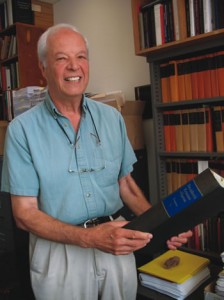
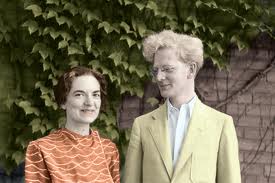
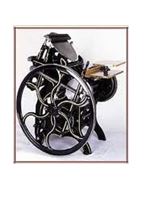


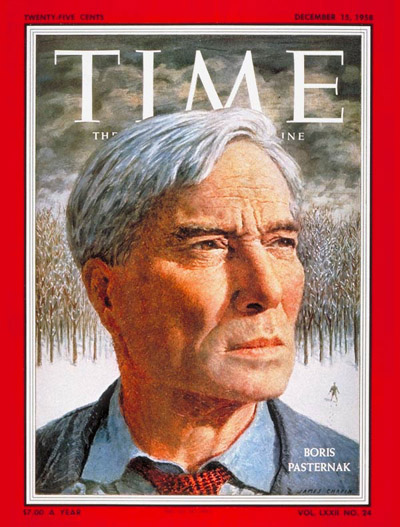
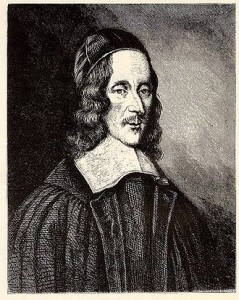 [
[